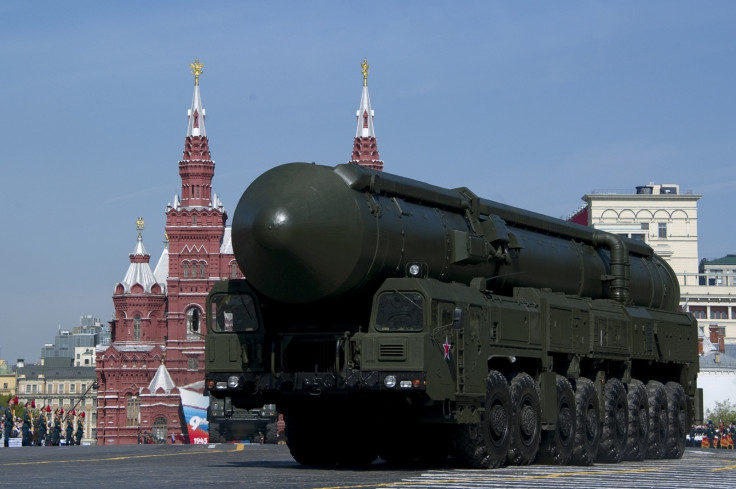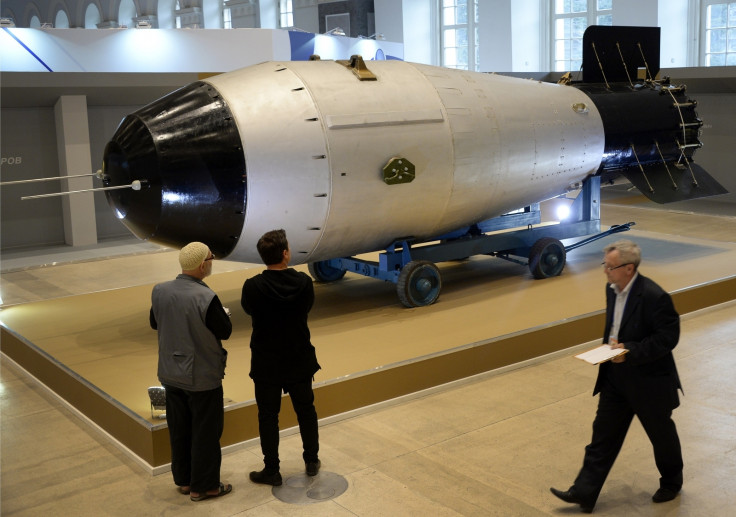Russia readying for nuclear war? Moscow reportedly expanding arsenal, upgrading underground bunkers
The Pentagon believes that Russia is working to develop smaller, tactical nuclear bombs.

Russia is planning on increasing the size of its nuclear arsenal and also modernising several of its underground nuclear command and control facilities, sources from the Pentagon, who chose to remain anonymous, have said.
Expansions such as these are not in violation of any arms control treaties as such since they do not involve city-levelling nuclear bombs, but rather, smaller, "tactical" nuclear ordnance that can be used directly against armies, noted a report in Popular Mechanics (PM).
PM quoted the Washington Free Beacon (WFB) report which stated that Russia is working towards expanding its nuclear arsenal from roughly 7,000 to 8,000 weapons by 2026. The additional warheads are likely to be low-yield or very low-yield bombs.
This will support, said the report, Moscow's new tactic of being willing to use nuclear bombs early on in any conflict. Should a nuclear conflict break out, Russia is preparing by fortifying their deep underground command and control facilities as well, the WFB report added.
According to current treaties that Russia has agreed to abide by along with the US, they can only have, at any given time, 1,550 "deployed strategic nuclear warheads". What this means is that all of Russia can only field 1,550 nuclear warheads in total. That includes all of their air, ground and sea launchers, all their missiles, including intercontinental ballistic missiles, and every single nuclear warhead in any part of Russia's domain and those that are on rolling convoys around the planet.
All the others in the country's stockpile must be non-deployable and set aside. These "strategic" weapons, noted PM, that are restricted by number are the ones that have a yield of over 100 kilotons (1 kiloton of explosive yield equals the explosive capacity of 1,000 tons of TNT), which is about six times the power of the bomb dropped on Hiroshima during World War II.
Such bombs are designed to cause widespread destruction, wiping out entire bases, taking out enemy nuclear stations, and if need be, flattening out entire cities.
This nukemap is a web tool that can help visualise how destructive a modern nuclear bomb can be in a densely populated urban environment.
As of now, it is believed that Russia has about 7,000 nuclear-capable weapons, including strategic, deployed and non-deployed ones.
In comparison, Reuters reported that the US has about 4,000 nuclear warheads in its military stockpile. This came after news recently broke that US President Donald Trump wanted a ten-fold increase in America's nuclear arsenal, which he later denied.
The tactical weapons, the production of which Russia reportedly wants to expand now, are classified as "non-strategic nuclear weapons" and are intended to attack enemy armies and fleets, according to PM. There was reportedly a treaty that was meant to govern tactical weapons as well, but Russia-US relations did not allow for that particular agreement to be ratified.
Tactical weapons – in spite of having smaller yields – can be placed in ICBMs, and Russia can technically get away with it, the report stated.
The research that Russia is apparently carrying out is in the development of bombs that fall in the range between 10 tons and one kiloton. Some of these bombs could even be clean, in the sense that the radioactive fallout from them would be minimal.

On why the Russians are looking to increase their nuclear arsenal, the report mentioned that the Kremlin might not be able to develop the kind of conventional weaponry that they hoped to because of rising costs and a number of sanctions placed on them.
The rise of missile defence systems used by the US and other opposing powers means ICBM attacks could be thwarted. While the report does mention that there is no way for the US to defend against a full-blown Russian nuclear attack, chances of one happening are small.
Nuclear weapons was one way in which Russia guaranteed a strong defensive position for itself during the Cold War. But with the fall of the Soviet Union (USSR), it became too expensive for Russia to maintain and many warheads also became obsolete. The Russians are not interested in reworking large kiloton bombs as well since the process is quite expensive.
On the other hand, tactical nuclear warheads that are small and precise could be a lot more useful for an army which might stand up against another army, noted PM. It is also a lot more effective to destroy enemy militaries rather than wipe out entire cities.
Also, small nuclear bombs place a major dilemma for enemies since a 10 ton nuclear explosive will not cause a lot of radiation, but can wipe out scores of soldiers and cause significant military damage. But how does the opposing army respond to this? With a full-blown nuclear retaliation or do they simply let it go? Either decision needs careful consideration.
IBTimes UK, however, was not able to independently verify these claims.





















